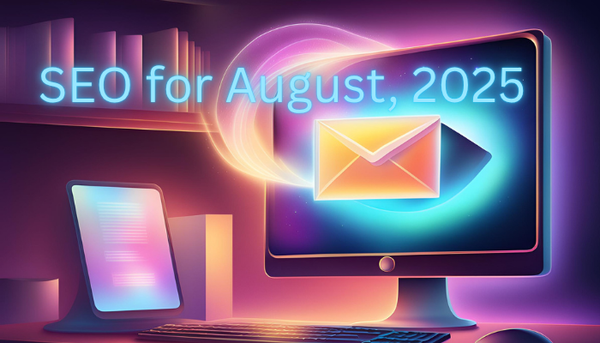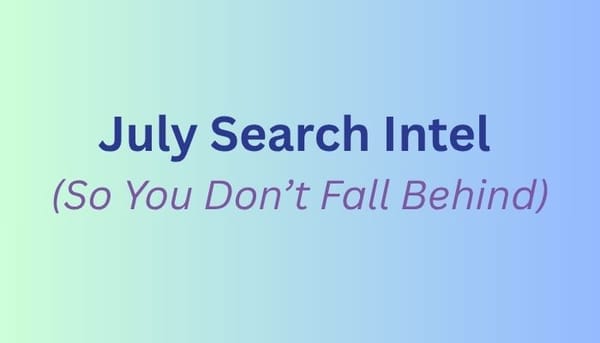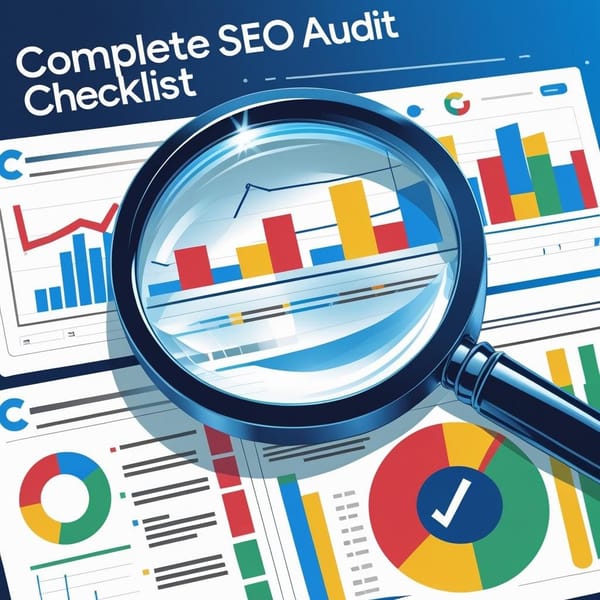AI Search Optimization - SEO for LLMs (Perplexity, ChatGPT, etc)
The search landscape is evolving, with AI tools leading the charge. My study of hundreds of queries reveals game-changing insights for content creators and SEOs. From the ideal article length to the power of visual content, I've uncovered the formula for success in this new era of search.
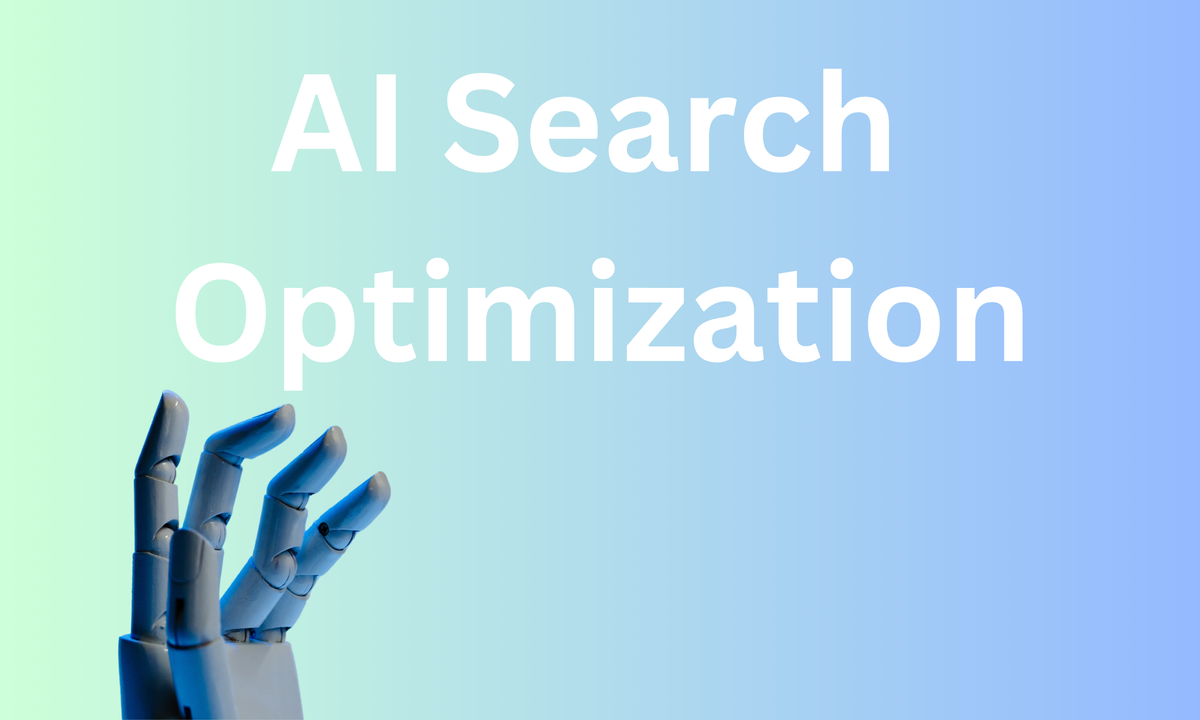
The search landscape is evolving, with AI tools leading the charge. Checkout this study of hundreds of search queries to discover insights for content creators and SEOs that can maximize your visibility in platforms like Perplexity and ChatGPT. From the ideal article length to the power of visual content, I've uncovered the formula for success in this new era of search.
Update 2:
I have been shouting from the rooftops that this is a strategy SEOs need to sit up and pay attention to. Finally other's are starting to catch on. In a video published by Kevin Indig, he found the same quality metrics I discovered below. Read below to learn how to capitalize on optimizing for LLMs like Perplexity - because while it accounts for a small amount of traffic, many people are seeing significantly better engagement, and higher conversions
Update 1
Since publishing this 2 months ago, my search traffic from Perplexity to this article shot up. I created this article using the exact advice I give you in how to show up in AI search engines like Perplexity, ChatGPT and more.
My overall referral traffic from Perplexity increased by 67%
My newsletter signup conversions from Perplexity doubled. If you're not signed up, do so now
The importance of AI Driven Search
AI-driven search tools are bringing new opportunities to discover and engage with content. For site owners, this means new areas to focus on for traffic generation, outside of traditional SEO. It’s important for SEOs to start considering these platforms as part of their overall strategy. Tools like ChatGPT, Perplexity, and Gemini are becoming increasingly important to optimize reach and drive highly engaged traffic.
In my experience, these AI tools now account for about 10% of my site's traffic. Perplexity has proven to be the most valuable source, delivering both the highest volume of traffic and the best conversion rates. ChatGPT follows as the second most impactful, while Gemini contributes to a small amount of traffic but has yet to yield conversions.
This shift represents a new era in search optimization, requiring content creators and SEOs to adapt their strategies to leverage these AI-powered platforms effectively. Understanding how to optimize for these tools can lead to significant gains in visibility and engagement.
If you take away anything from this article, know this:
Perplexity is more likely to cite sources than other platforms and includes both images, video and text.
- Incorporate unique images, especially charts, graphs, and diagrams.
- Utilize YouTube to increase your chances of content being shown and referenced
- Craft your content using conversational queries, formatting with bullet points, and citing sources.
The Data Behind AI Citations
Understanding how and why certain content is cited can give you a competitive edge. I did a deep dive into 500 search queries to gather specific data on what types of content AI tools like Perplexity and ChatGPT are most likely to reference. This analysis will show you exactly how to structure your content to maximize visibility in these platforms.
The Analysis
I created the below best practices for optimizing for AI platforms after analyzing which of my own articles were generating the most traffic and conversions, studying the type of articles that were frequently cited for various search queries when using the platforms, conducting experiments across a large number of searches, and analyzing the sources provided in depth. Here are my results.
I performed a deep analysis of the types of articles appearing for different types of search queries (mostly using Perplexity, more info on why below). This has created a lot of insights into the types of content most likely to surface as citations. I will share the data here and then insights into the different ways you can leverage these discoveries to optimize your brand’s presence in AI-powered search engines and tools like Perplexity, ChatGPT or Gemini.
The Test
I performed 500 searches of different types. I broke these out into two groups:
General search queries
- 100 search queries around home improvement and gardening
- 100 search queries around business and marketing
YMYL related search queries
- 150 search queries around financial related topics
- 150 search queries around health related topics
To ensure that my search queries were diverse and remained neutral, and not part of my normal search patterns, I requested Perplexity to generate each list of search queries and make them conversational. I then used these search queries to perform my analysis.
Source Citation
GPT: never provided links to sources unless specifically requested
Gemini: provided sources about 30% of the time, always at the bottom of the answer, and (for me) there was a delay between providing the answers and when the results appeared, making me assume in some instances that no sources were provided.
Perplexity: Provided links to its sources 100% of the time with the following exceptions which have no sources, images or videos
- Asking it to rewrite something for you
- Asking it to draft an email
- Creative tasks, like asking for domain name ideas.
Based on the analysis, I did my deep dive using Perplexity because on an initial manual analysis, it appears that best practices for Perplexity will also enhance your chances in showing in ChatGPT and Gemini.
I will do a deeper dive into the other platforms, and link to them here when finalized.
Frequency of Sources Cited
On average, across both search verticals, the number of articles cited was 8. The lowest was 4 and the highest was 16.
Video sources cited
Videos were cited much more regularly for non YMYL queries than YMYL. For this experiment I considered a video being cited when it automatically shows up in the right-hand side of Perplexity’s search function vs having to manually generate video results.
Across the general queries:
Most queries had videos, and most had atleast 1 video.
- 0 videos displayed: 10%
- 1 video displayed: 47%
- 2 videos displayed 29%
- 3 or more: 16%
Among YMYL related queries:
Most queries had no videos, and out of the results that contained videos most were 1 video. When multiple videos were shown, this tended to be around trendy finance topics like crypto or health queries benefitting from visual demonstrations like CPR
- 0 videos displayed: 77%
- 1 video displayed: 14%
- 2 videos displayed 5%
- 3 or more: 4%
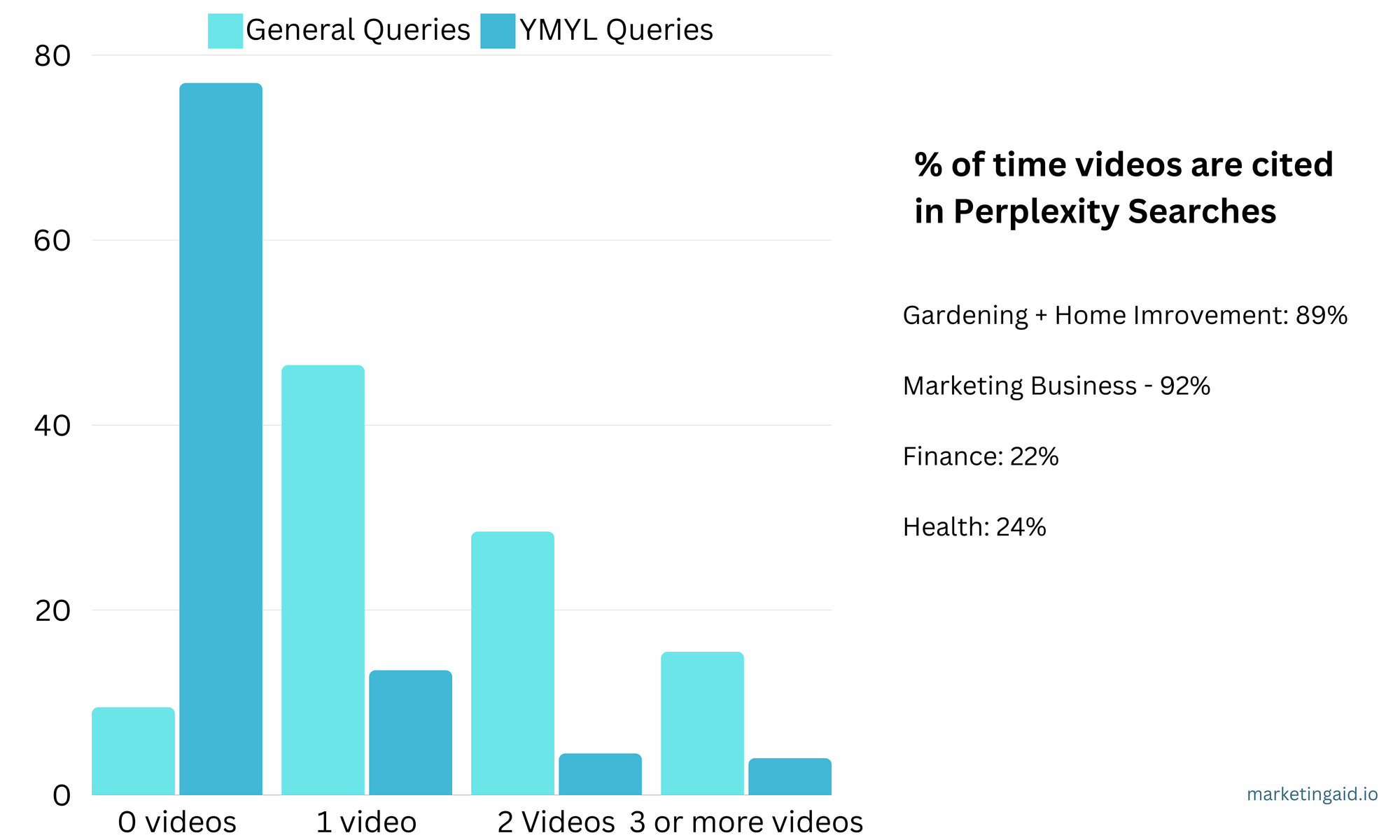
Detail on the articles themselves:
I also analyzed the types of articles that tended to be cited most frequently. Space by type I mean articles that would be considered a “listicle”, articles that prominently displayed the date in the title tag, space article titles referencing words like best or guides. What days are analyze the titles as well as looked at the articles themselves to see if they prominently displayed any lists within them.
One thing to note here is that a single search query contains multiple article sources and article types may be frequently repeated within the same search.
General queries
In the general search category, I found that the majority of article types were either lists or how to style posts. For lists this means it either referenced lists in the title or contained lists in the article itself. for how to this generally means that the title contained the phrase “how to”
35% of the articles these were lists
15% of the time these had references to “Guide” in the title “Ultimate Guide for …”
30% of the Articles were “how to” style articles and contained that in the title
8% of article titles referenced a date. For example the month and year.
5% of the time the article title included the word “best”.
YMYL related queries
For YMYL related queries I found that the vast majority of articles cited contained lists and that the second pattern I saw was that more had the date in the title. There were very low incidences of how-to style posts, or guide keywords in these query types.
91% of the articles contained lists
3% of the time these had references to “Guide” in the title “Ultimate Guide for …”
4% of the Articles were “how to” style articles and contained that in the title
20% of article titles referenced a date. For example the month and year.
2% of the time the article title included the word “best”.

Cited Article Average Length
- The shortest article was 162 words but had an embedded youtube video, however it was referencing the article not the video in the sources
- The average wordcount for YMYL queries was about 1000
- The average wordcount for general queries was about 1500
- The longest article was 3100
- All articles had images, the average being 2
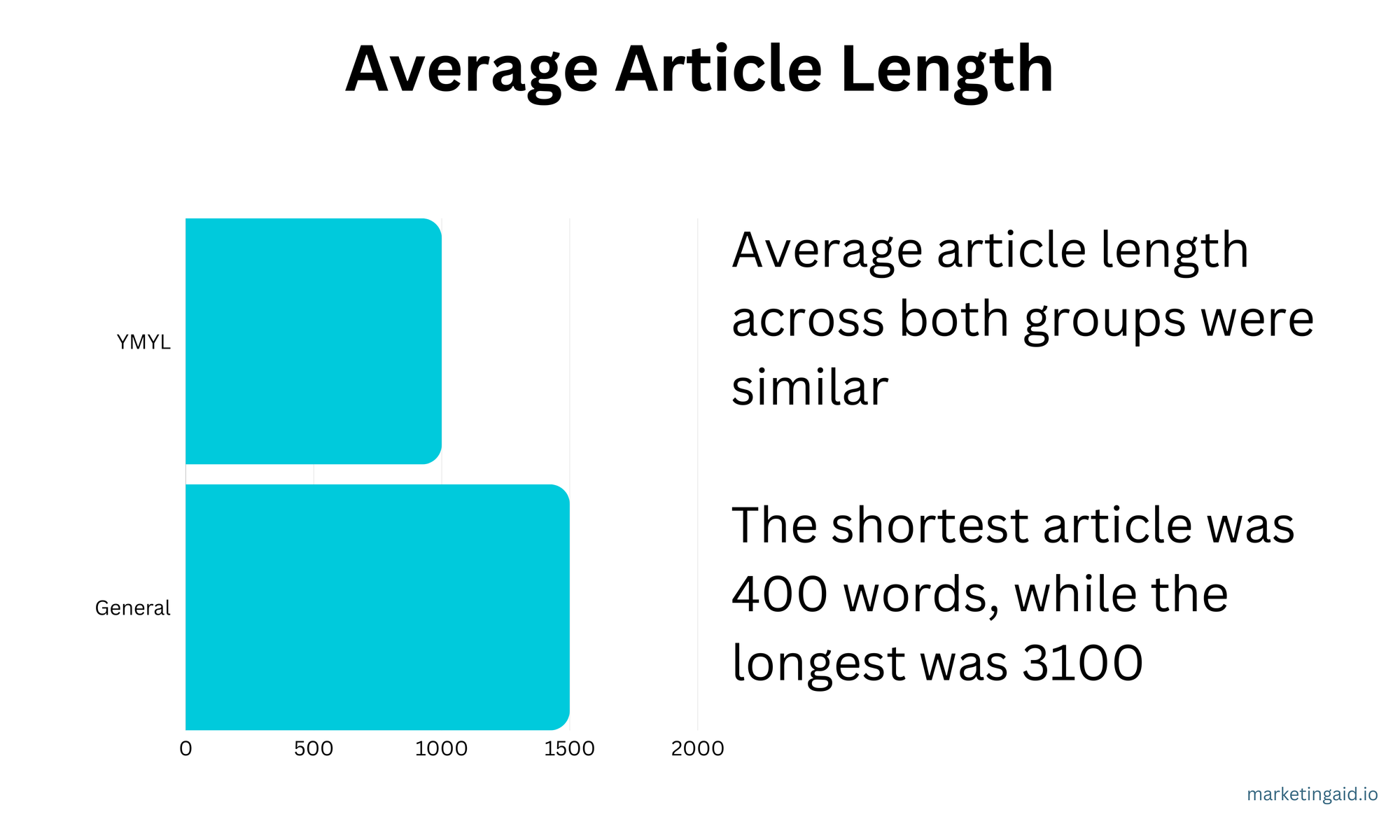
Images cited
I am only counting times where images were automatically loaded and not when having to click “manually generate”. I found that in general very little queries in the YMYL space automatically referenced images, while most queries in the general space did.
- YMYL queries only referenced images about 10% of the time
- General queries showed images about 70% of the time
Whether loading images or manually generating them, the average number of images provided were about 7
Notes on domain authority
Among general queries I found a wide variety in the types of sites referenced when it comes to the traditional view of authority. Sites could be anything from smaller blogs, to business domains to more traditional sources like universities. I never saw pages like Wikipedia though. On Gemini however the articles all seemed higher authority.
Among YMYL queries, all of the sites tended to have what we would consider a high amount of authority. These sites were all universities, government sites, or high authority sites like Nerdwallet. This may play a role in why youtube videos were automatically generated less frequently.
Other Notes
I found that about 18% of the time I saw domains repeated multiple times for the same query when the title is well formatted for the question
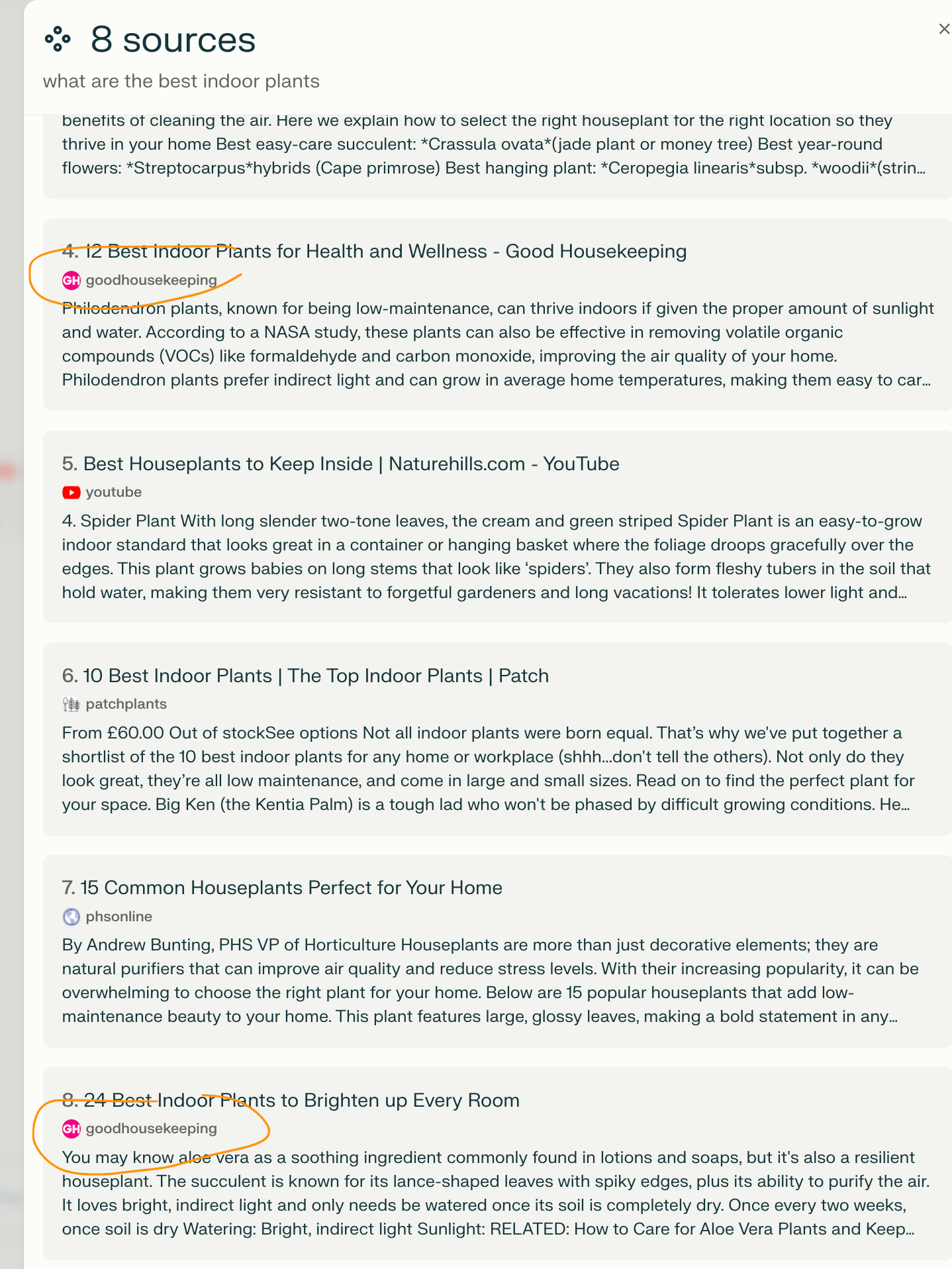
Another note is that Perplexity seems to have no issues lifting up articles that are heavy on affiliate links and content. With Google cracking down on affiliate marketing in blogs, pivoting to ranking in AI search platforms like Perplexity may be a strategy worth investigating
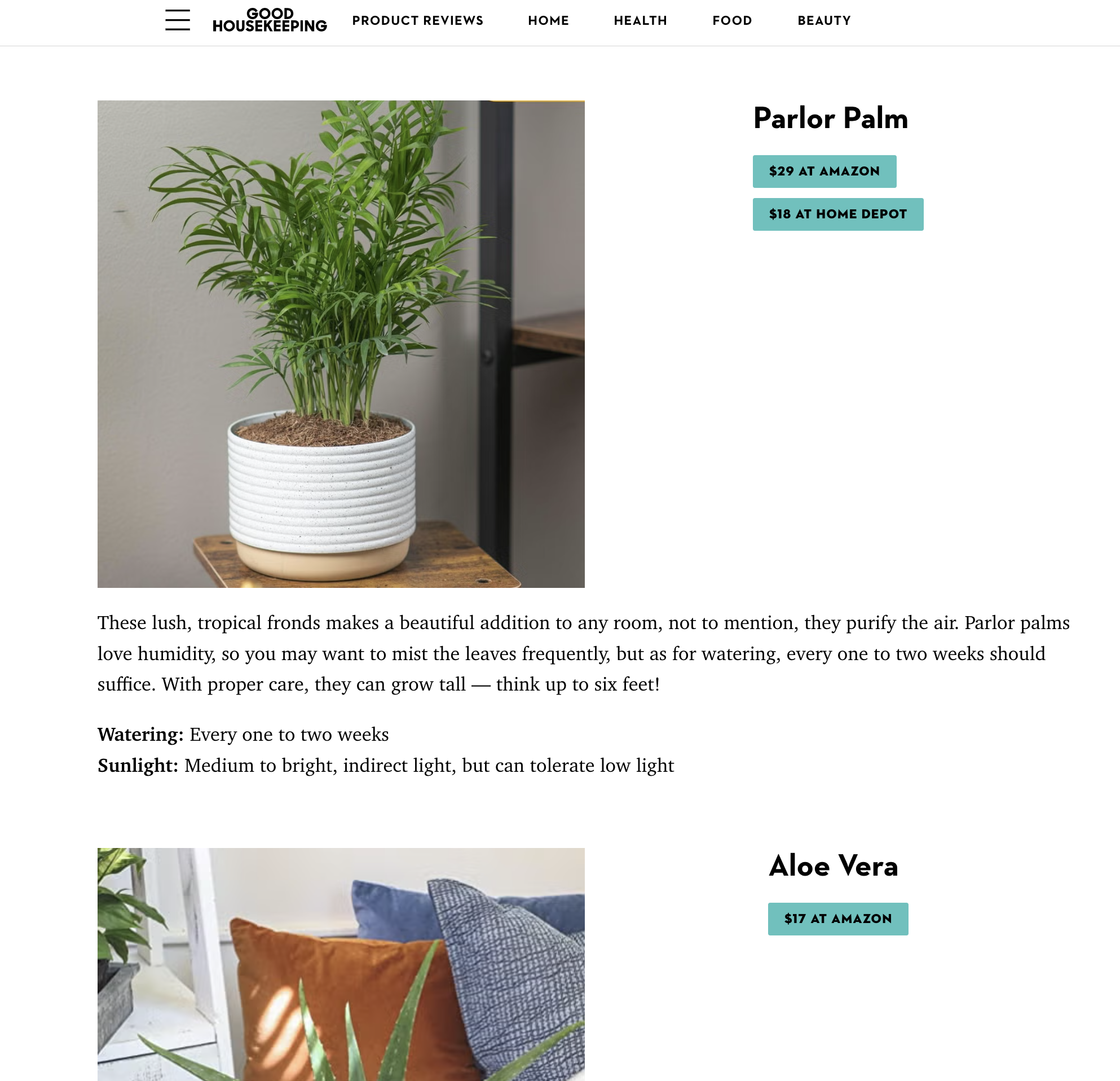
How to Optimize for AI Search Platforms
Understanding AI-Driven Search
Before we jump into best practices, lets first start with a brief overview. The key players in this space include ChatGPT, Perplexity, and Gemini, with ChatGPT's upcoming SearchGPT platform poised to make a significant impact. Once that is live, I will do a similar study to this one.
These tools are fundamentally changing the search behavior in several ways:
- Natural language processing: Users can ask questions in conversational language, making searches more intuitive. This plays into best practices for Google and AI Overviews as well.
- Contextual understanding: AI tools, and Google now, can interpret the intent behind queries, providing more relevant results.
- Real-time information synthesis: Instead of just linking to sources, these tools can compile and summarize information from multiple sources.
- Personalized results: AI can tailor responses based on user preferences and past interactions.
- Interactive search experience: Users can refine their queries through follow-up questions, creating a more dynamic search process.
The rise of AI-driven search is shifting the focus from keyword-centric content to comprehensive, informative articles that can serve as authoritative sources for these AI tools. This change necessitates a new approach to content creation and optimization, one that prioritizes depth, accuracy, and relevance over traditional SEO tactics. These are good best practices to adopt in general for broader generic SEO efforts as well.
Optimizing for AI Traffic
Optimizing content for AI-driven search tools shares similarities with traditional SEO best practices. Here's what you need to know:
General strategies for AI-friendly content:
- Prioritize depth and detail: Longer, more comprehensive articles tend to perform better with AI tools.
- Include statistics and quotes: AI systems often reference specific data points and expert opinions.
- Link to reputable sources: External links to authoritative sites can boost your content's credibility.
- Create long-form lists: "Top X ways to do a specific thing" articles are particularly effective.
- Use clear, structured formatting: Well-organized content with headers and subheaders is easier for AI to parse.
- Optimize for conversational queries and intent: This aligns with how users are actively using the platforms and increases your chance of being shown responses.
Examples from sources cited from Perplexity around the phrase "How to consolidate credit card debt"

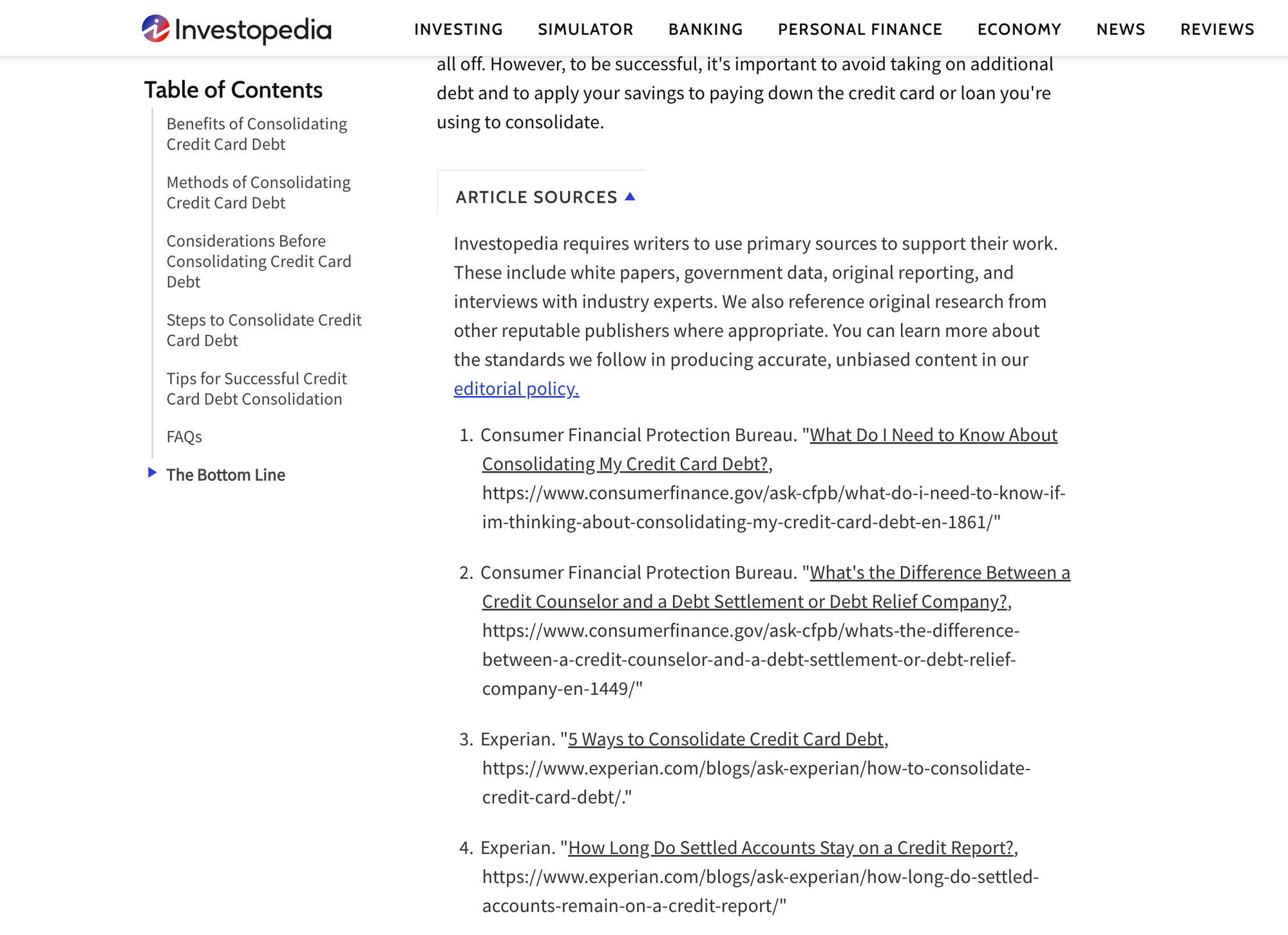
Perplexity AI optimization:
Perplexity's search algorithm favors recent, authoritative content. To leverage this:
- Regularly update your content with fresh information.
- Perplexity in particular loves to reference both YouTube and articles, you can increase your opportunities for appearing if you utilize multiple platforms.In addition, shorter articles that have youtube embedded in them tend to be picked up in Perplexity.
- Establish domain expertise through consistent, high-quality content in your niche.
- Utilize Perplexity Pages to create a dedicated presence on the platform.
For keyword strategies, focus on long-tail, question-based phrases that align with natural language queries.
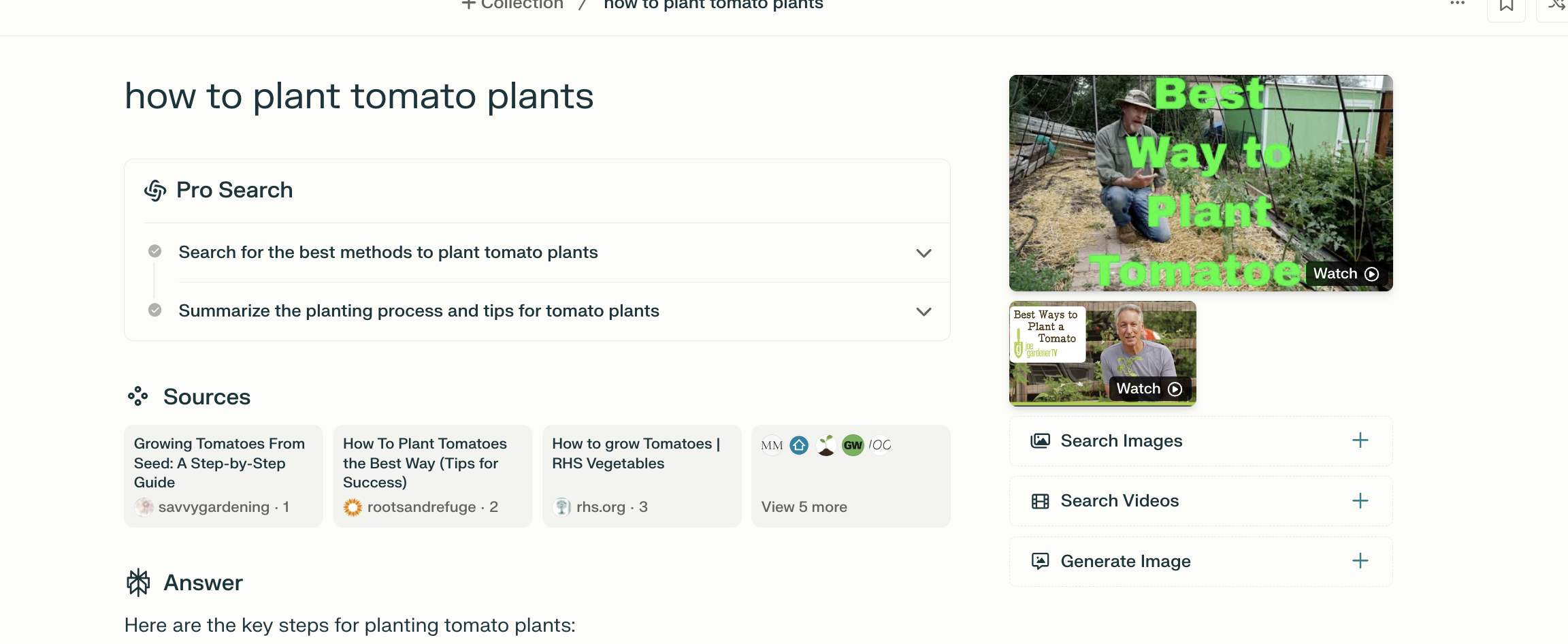
Note on SearchGPT:
Once released, SearchGPT may become a major traffic driver. It's expected to integrate more closely with web content, potentially offering new opportunities for visibility. Keep an eye on its development and be prepared to adapt your strategies accordingly.
Remember, the key to success in AI-driven search is creating content that's not just optimized for algorithms, but genuinely useful and informative for human readers. This approach aligns with the goals of AI search tools and positions your content for long-term success.
More detailed tips:
Optimize for Conversational Queries
Structure Content Around Questions and Answers
Keyword stuffing has been outdated for awhile. As with traditional SEO - don't do it. Today, it's all about providing clear, direct answers to specific questions. Consider structuring your content as a Q&A session:
- Start with a common question in your niche
- Provide a concise answer immediately after
- Follow up with more detailed explanations
This format mirrors how Perplexity presents information, making it more likely for your content to be cited as a source.
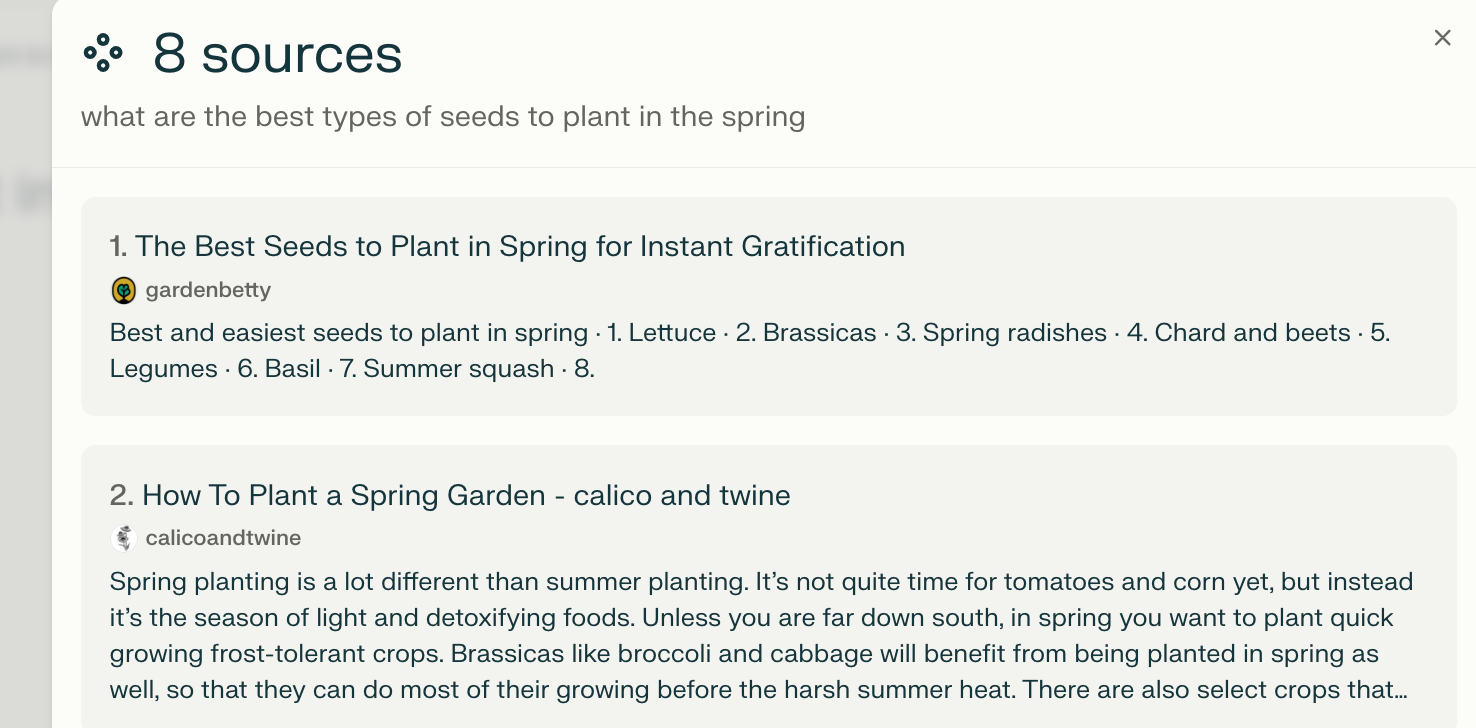
Embrace Natural Language and Conversational Tone
When crafting your content, imagine you're explaining the topic to a friend over coffee. This approach helps in several ways:
- It makes your content more engaging and relatable
- It aligns with how people naturally phrase their queries
- It improves readability, which is crucial for both users and AI systems
Remember, Perplexity is designed to understand and respond to natural language queries. By writing in a conversational tone, you're speaking the same language as the AI and its users.
Anticipate and Address Follow-up Questions
One of Perplexity's unique features is its ability to generate follow-up questions. To stay ahead of the curve:
- Brainstorm potential follow-up questions related to your main topic
- Incorporate these questions and their answers within your content
- Use subheadings or FAQ sections to address these questions directly
By anticipating and addressing follow-up queries, you're not only providing more comprehensive content but also increasing the likelihood of your article being cited for multiple related searches.
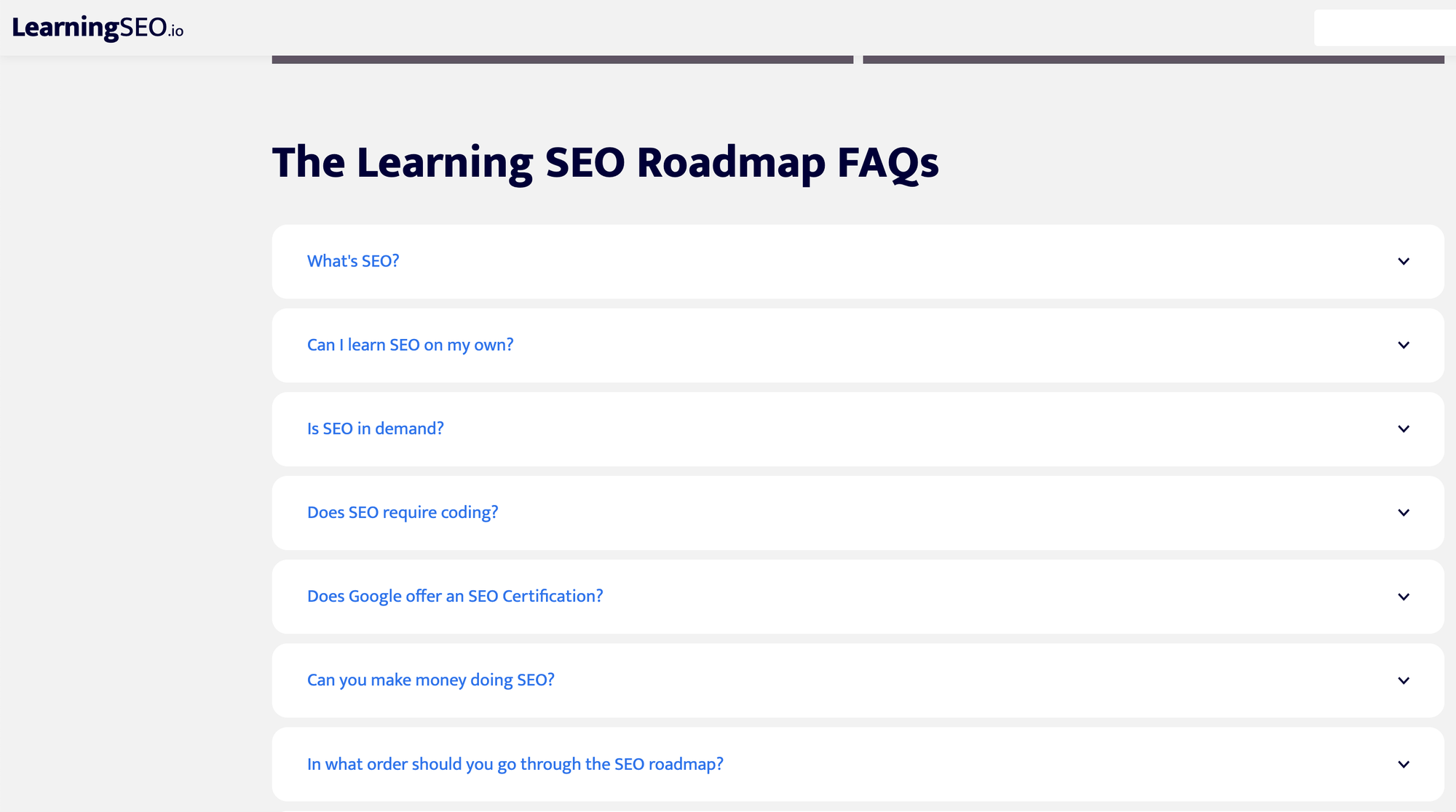
Harnessing Perplexity's Follow-Up Questions for Content Creation
Research Common Follow-Up Questions
Start by using Perplexity to explore your topic thoroughly:
- Enter a broad query related to your subject matter
- Note all the follow-up questions Perplexity generates
- Click on relevant follow-up questions to dive deeper
- Repeat this process, branching out into various subtopics
This method allows you to map out the entire landscape of questions users might have about your topic.
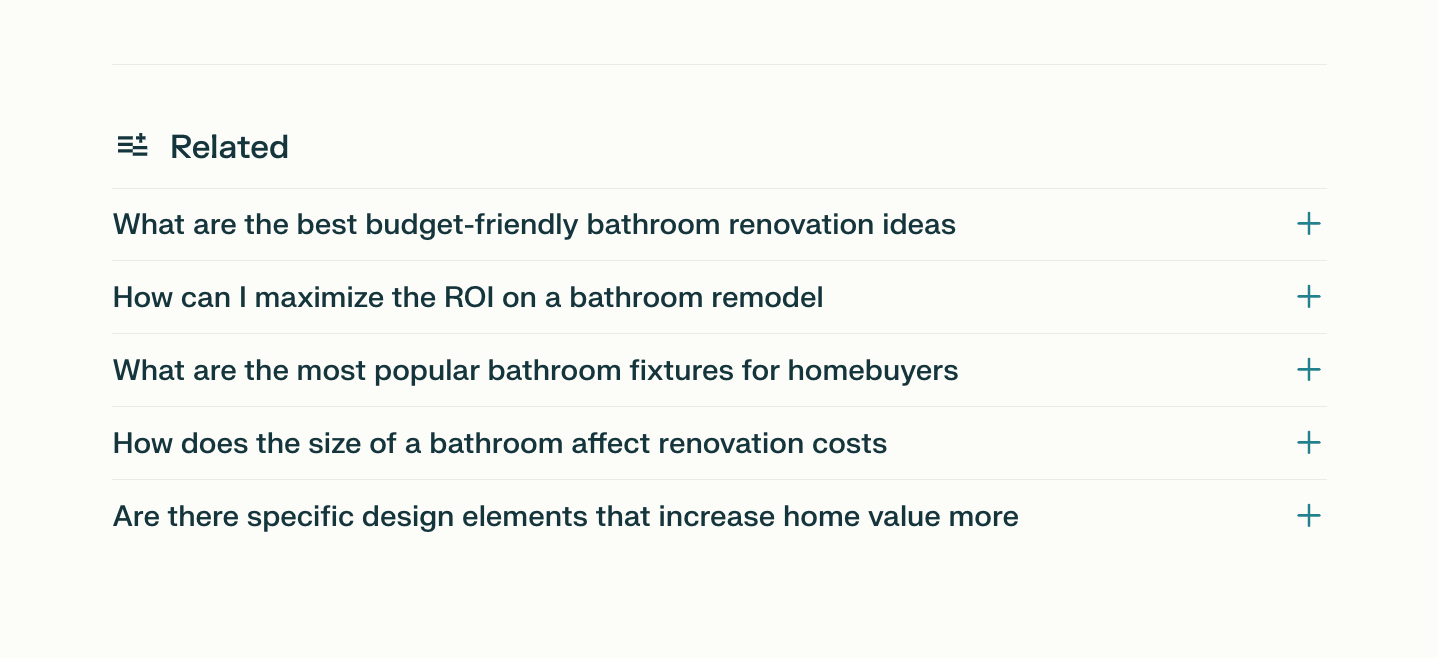
Create Comprehensive FAQ Sections
Once you've gathered a robust list of follow-up questions:
- Organize the questions into logical categories
- Prioritize questions based on relevance and frequency
- Use the most pertinent questions as the foundation for your FAQ section
- Craft detailed, accurate answers to each question
By basing your FAQ on Perplexity's follow-up questions, you're essentially addressing the exact queries your audience is likely to have. This approach significantly enhances the relevance and usefulness of your content.
Address Questions Comprehensively in Your Content
Beyond creating a dedicated FAQ section, use these insights to enrich your main content:
- Incorporate answers to key follow-up questions throughout your article
- Use the questions as subheadings to structure your content logically
- Anticipate and address potential reader questions before they arise
- Provide in-depth explanations for complex topics highlighted by follow-up questions
This strategy ensures your content is thorough and leaves no stone unturned, satisfying both casual readers and those seeking detailed information.

Structuring Content for Easy Extraction:
This approach not only makes your content more user-friendly but also increases the likelihood of Perplexity citing your work.
Provide Clear, Concise Answers Upfront
The inverted pyramid style, traditionally used in journalism, is highly effective for Perplexity optimization:
- Start each section with a direct answer to the main question
- Follow with supporting details and explanations
- End with background information or related topics
This structure allows Perplexity to quickly identify and extract the core information. For example:
"The boiling point of water is 100°C (212°F) at sea level. This temperature can vary based on atmospheric pressure, with higher altitudes resulting in lower boiling points. The relationship between boiling point and pressure is described by the Clausius-Clapeyron equation."
By providing the key information upfront, you increase the chances of your content being featured in Perplexity's quick answers or summaries.
Leverage Bullet Points and Numbered Lists
Bullet points and numbered lists are powerful tools for organizing information:
- They break up dense text, making content more scannable
- They present information in a structured, easy-to-digest format
- They help Perplexity identify and extract key points quickly
When using lists:
- Keep each point concise and focused
- Use parallel structure for consistency
- Start with the most important information
- Limit lists to 5-7 items for optimal readability
Remember, while lists are useful, they shouldn't dominate your content. Use them strategically to highlight key points or steps in a process.
Include Brief Summaries or Key Takeaways
Summaries and key takeaways serve multiple purposes:
- They reinforce the main points for readers
- They provide a quick reference for those skimming the content
- They offer Perplexity a concise, extractable summary of your article
Consider including:
- A brief summary at the beginning of long articles
- Key takeaways at the end of each major section
- A comprehensive summary or conclusion at the end of the article
When crafting these summaries:
- Focus on the most important information
- Use clear, straightforward language
- Avoid introducing new information
- Keep them concise, typically 2-3 sentences or 30-50 words
Here's an example of a section summary:
Key Takeaway: Structuring content for easy extraction involves providing clear answers upfront, using bullet points and numbered lists judiciously, and including brief summaries. This approach improves readability for users and increases the likelihood of your content being cited by AI-powered search engines like Perplexity.
⭐️ Tip! Use AI to help you craft key takeaways
Optimize for Industry-Specific Platforms
To maximize your content's visibility on Perplexity AI, it's crucial to establish a strong presence on platforms that are frequently cited within your specific industry. Perplexity often draws information from authoritative, industry-specific sources to provide comprehensive answers to user queries. By strategically positioning your content on these platforms, you can increase the likelihood of being cited by Perplexity and reaching a wider audience.
Identify Key Platforms
First, research which platforms Perplexity commonly references when answering questions related to your industry. Some examples include:
- TripAdvisor and Booking.com for travel and hospitality
- Yelp for restaurants and local businesses
- LinkedIn for professional services and B2B content
- GitHub for software development and tech-related topics
Optimize Your Presence
Once you've identified the relevant platforms, focus on optimizing your presence:
- Create comprehensive profiles or listings
- Regularly update your information
- Encourage customer reviews and ratings
- Publish high-quality, industry-specific content
Leverage User-Generated Content
Many industry-specific platforms thrive on user-generated content. Encourage your customers or clients to share their experiences. We know this information is important to Google, so likely plays a role in how Perplexity compiles information.
Emphasis on Data Visualizations
Perplexity AI appears to give preference to diagrams, charts, and graphs for several reasons:
- Data Comprehension: Visual representations often make complex data more accessible and easier to understand at a glance.
- Trend Analysis: For queries involving changes over time or comparisons between entities, charts and graphs are particularly effective in conveying information.
- Scientific and Academic Content: Many academic and scientific sources use diagrams and charts to illustrate findings, which Perplexity may prioritize for their credibility and information density.
Integration with Text Responses
Perplexity's approach to integrating visual elements with text responses enhances the overall user experience:
- Complementary Information: Charts and diagrams are often presented alongside text explanations, providing additional resources to user queries.
- Visual Anchoring: By referencing specific visual elements in its text responses, Perplexity helps users connect textual information with the visual data.
Diverse Visual Content
While Perplexity does emphasize data visualizations, it also includes other types of images when relevant:
- Contextual Imagery: For queries that benefit from visual context beyond data, Perplexity will include relevant photographs or illustrations.
- Platform-Specific Results: When searching across specific platforms like YouTube or Reddit, Perplexity may include thumbnails or other platform-specific visual elements.
Measuring Success
Tracking and analyzing AI-driven traffic is crucial for refining your optimization strategies. Here's how to measure your success:
Tools for tracking AI-driven traffic:
- Google Analytics: Set up custom segments to isolate traffic from AI sources. You can segment either by referral traffic to uncover which platforms are referring traffic to you, or use a regex query
- If your platform tracks conversions by referral source, check there to see which articles are converting users. For example, I am currently using the Ghost CMS which shows me which articles users subscribed from on an individual level, as well as top referrals on a more broad level.
Key metrics to monitor:
- Traffic volume: Track the overall number of visitors from AI sources.
- Bounce rate: Measure how engaging your content is for AI-referred visitors.
- Time on page: Longer visits often indicate more valuable content.
- Conversion rate: Monitor how AI traffic performs in terms of your site's goals.
- Source breakdown: Compare performance across different AI platforms.
Adjusting strategies based on performance:
- Content type analysis: Identify which formats (e.g., long-form articles, lists) perform best.
- Topic performance: Focus on subjects that resonate with AI-driven traffic.
- Update frequency: Determine how often you should refresh content for optimal visibility.
Conclusion
I hope this article gave you some solid, actionable insights into how AI search tools can help drive traffic. It’s clear that optimizing for these platforms is going to be a big part of SEO moving forward. Now that you’ve got the data and the strategies, it’s time to put them to work and see how these changes can boost your visibility and conversions. Give it a shot, and see what results you can get.



